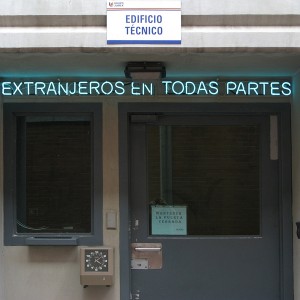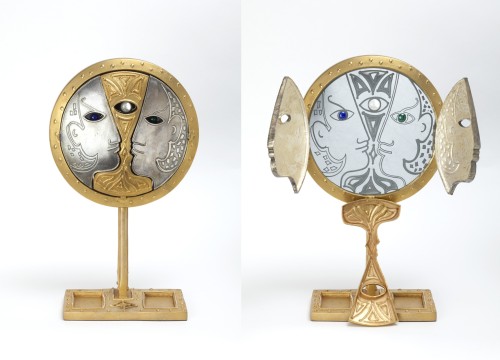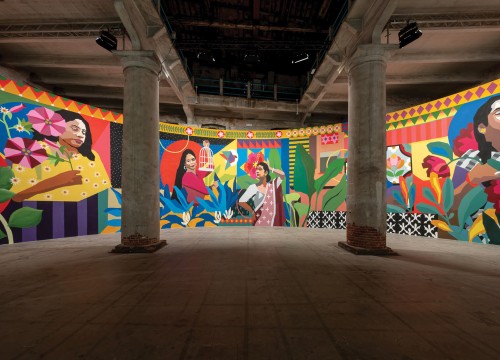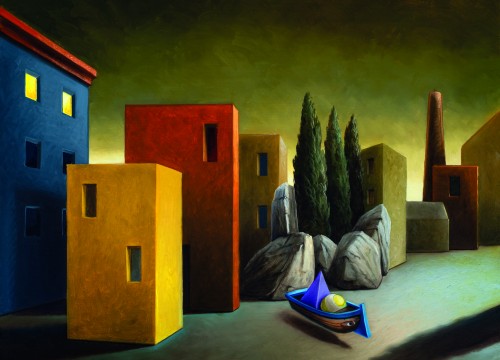An edition that reflects an increasingly foreign and queer society
The LX Biennale di Venezia promises to be foreign and queer. Already in the title, “Strangers everywhere”, reflects the crises of our world, with exodus of people physically moving between nations and boundaries, and psychically between concepts of identity, race, gender, sexuality, facing all the pitfalls connected with these concepts.
“Stranger is ‘strange’, foreign, disturbing”, says Adriano Pedrosa, Brazilian, first South American curator of the Biennale. “On a personal level I feel very involved by the themes and reasons of the exhibition; traveling, I have often experienced the treatment given to a foreigner of the Third World. I also identify myself as queer, the first openly queer curator in the history of the Biennale, and I come from a Latin American context in which indigenous artists play important roles although they have been marginalized”.
ADRIANO PEDROSA IS THE FIRST SOUTH AMERICAN CURATOR OF THE IMPORTANT LAGOON EVENT
In Venice “foreigners are everywhere”, the concept of foreigner is home, since its foundation by refugees from the mainland. Today the city has just over 40,000 residents, but every day an immense number of visitors pour in. The title of this edition comes from an expression of a homonymous Turin collective that at the beginning of 2000 fought racism and xenophobia, then adopted by the collective Claire Fontaine, born in Paris and based in Palermo, which gave rise to a series of neon sculptures of different colors with the inscription Foreigners everywhere in 53 languages, including indigenous idioms extinct, installation on display.
Key theme is migration: 332 artists, 90 countries, 30 side events. The Biennale will be an observatory on immigrant artists, expatriates, diasporic, migrants and refugees. The two Golden Lions for Lifetime Achievement were awarded to migrant artists, Anna Maria Maiolino (1942), from Calabria who lives in São Paulo, Brazil, and Nil Yalter (1938), born in Cairo, who lived in Turkey and settled in Paris, presenting her work Exile is a hard job at the Central Pavilion. The focus of the International Exhibition will be four types of artists: “the queer, who moves within different sexualities and genres, often persecuted and banned, the outsider, who is on the edge of the art world, the self-taught, the folk artist, and the indigenous artist, foreign even in his homeland”.
THE TITLE OF THE EVENT "FOREIGNERS EVERYWHERE" IS BORROWED FROM THE TURIN-BASED COLLECTIVE OF THE SAME NAME THAT AT THE BEGINNING OF 2000 FOUGHT RACISM AND XENOPHOBIA
The exhibition winds through a contemporary core with videos and films related to the themes “gender disobedience” and “diaspora”, and a historical core of the ‘900: “The modernisms of the South of the world are unknown, taking on new forms. Abstraction is detached from the European abstract geometric constructivist tradition with its rigid orthogonal vertical and horizontal and primary color palette, to favor more organic and curvilinear forms”.
A curiosity: in the section “Portraits”, artworks by 112 artists, most of them portray non-white characters. Visibility to the ignored, this year, in Venice: “With the inclusion of these artists in the historical core of the Biennale I hope that a historical debt that we have towards them will be repaid”.
An enlarged horizon for the audience and the curator’s promise to bring much beauty. “Wherever you go, wherever you are, foreigners will always meet. They are, we are everywhere”.



































